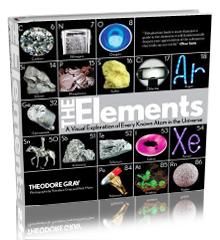Superconducting powder | |||
| Sample Image | Spin Video | QuickTimeVR Rotation | |||
| Superconducting powder. This is a small vial of superconducting yttrium-barium-copper-oxide powder. Normally this type of material is seen pressed into pellets that can be used to levitate magnets or perform other superconducting experiments. Background information from the source: Yttrium barium copper oxide was discovered in the late 1980's as being the first known substance to exhibit superconductivity above 77 Kelvin (-321\272F, -195C) outside of a mind-meltingly strong magnetic field. In the grand scheme of things, 77 Kelvin is a completely random value--it has no greater cosmic meaning, it's not an ultimate limit that contradicts some obscure physics theory, nothing like that. Rather, 77 Kelvin is the boiling point of nitrogen. The significance is simply that with the discovery of this material, superconductivity was a phenomenon that suddenly emerged from the realm of "laboratory curiosity" into the wide bright world of "industrially and economically feasible," using liquid nitrogen as a coolant. Previously, liquid hydrogen or liquid helium were necessary to access the temperatures at which superconductivity could be observed (outside of that frog-levitatingly strong magnetic field), both of which are at least an order of magnitude more expensive than liquid nitrogen. Source: Anonymous Contributor: Theodore Gray Acquired: 27 December, 2008 Text Updated: 1 March, 2009 Price: Anonymous Size: 1" Composition: YBa2Cu3O7 | |||
|

